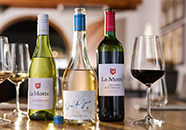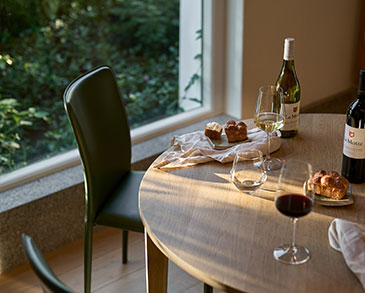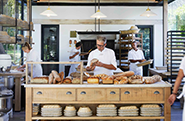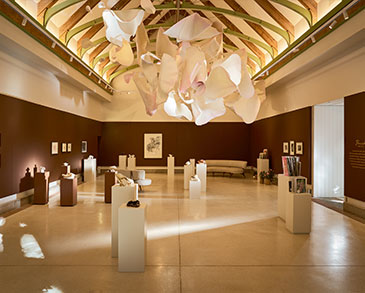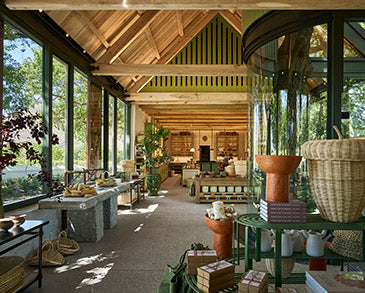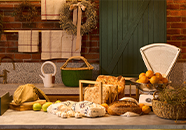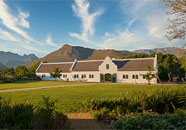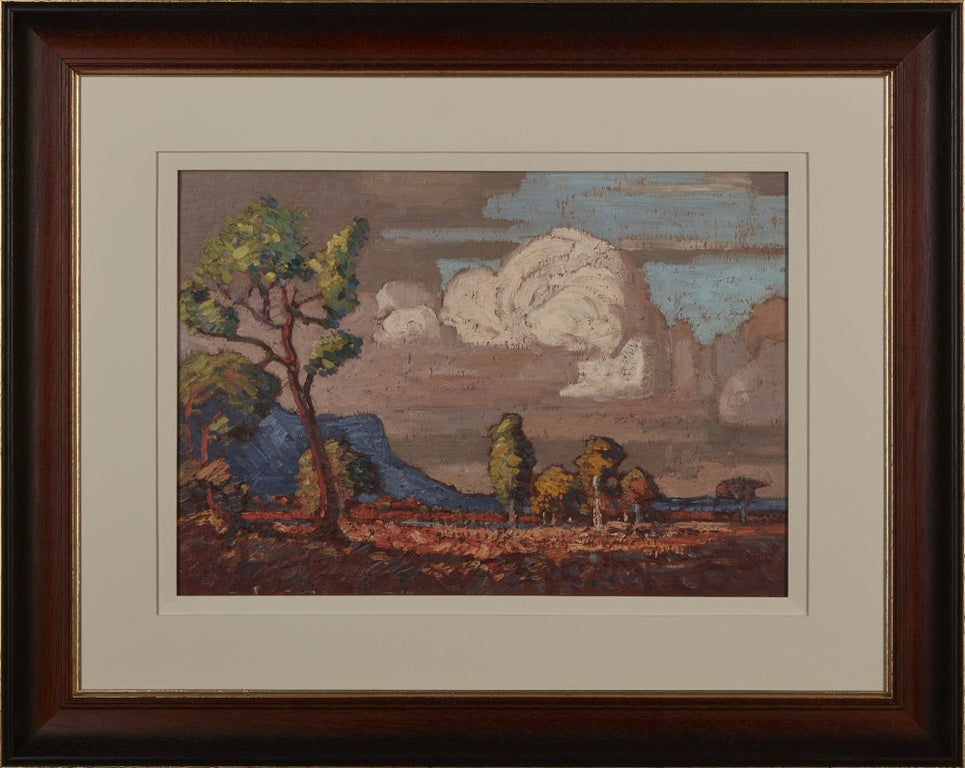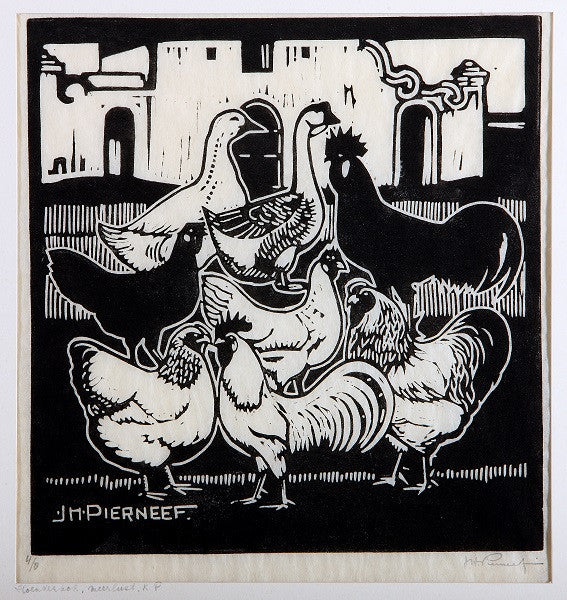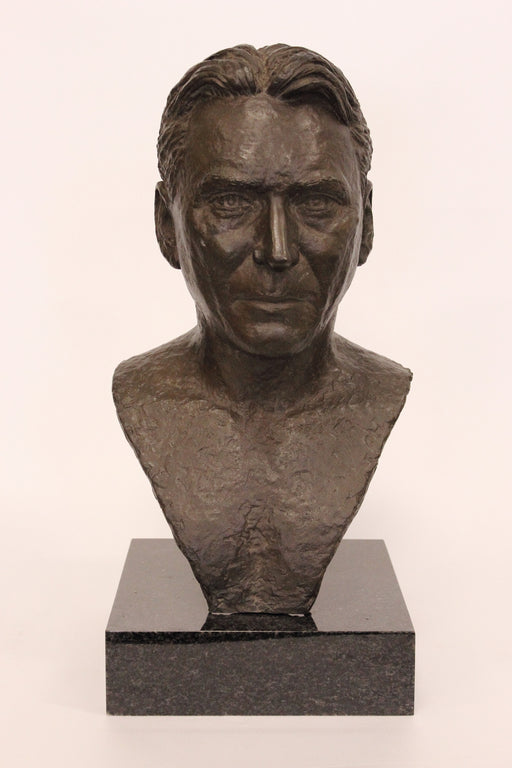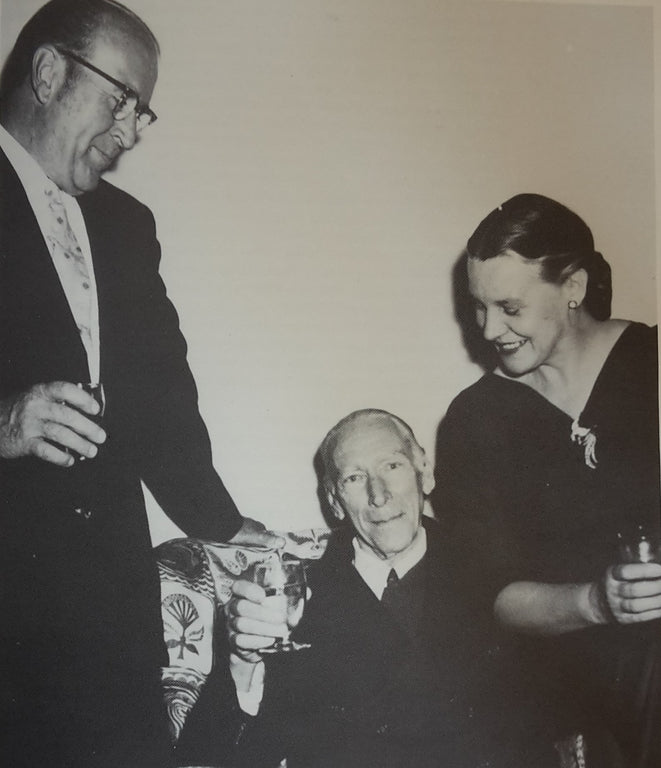Die Suid-Afrika Huis in Londen / The South Africa House in London
Na afloop van Pierneef se suksesvolle uitvoering van die openbare opdragwerk t.o.v. die Johannesburg Stasiepanele in 1932 is hy genader om saam ‘n groep Suid-Afrikaanse kunstenaars die Suid-Afrika Huis by Trafalgarplein in Londen te versier. Elk van die kunstenaars het ‘n spesifieke vertrek en tema gekry waarvoor hulle werke moes skep. Pierneef is reeds in 1931 deur Charles te Water en die argitek Sir Herbert Baker genader rakende die nasionale opdrag.
Pierneef, saam sy vrou en sy dogter Marita, het 27 Junie 1933 na Londen vertrek. Dit was ook die tyd dat Pierneef se pa, Gerrit, baie siek was en Pierneef het met ‘n swaar hart vir die uitvoering van die opdrag na Londen gegaan. Sy pa is in November dieselfde jaar oorlede.
Pierneef het tot Mei 1934 aan agt skilderye vir die Suid-Afrika Huis gewerk. Die werke sluit in: Matala’s location, Autumn: Die Hoek, Houtbosberg, Winter veld scene from the Drakensberg, The Witwatersrand, Evening: Mont aux Sources, Winter in the Low Veld en Koedoesrivier.
Onder die ander kunstenaars was die beeldhouer Coert Steynberg. Dit was met hul verblyf in Londen en die uitvoer van die opdrag dat Pierneef en Steynberg ‘n hegte vriendskapsband aangeknoop het. Die twee het ‘n liefde vir gesels en die Bosveld gedeel, en dit was Pierneef wat Steynberg aan San-rotskuns bekend gestel het en so ook ‘n bewondering daarvoor by Steynberg wakker gemaak het. Die gedeelde belangstelling het ook in 1939 na vore gekom. Op die voordeur van Pierneef se huis, Elangeni, het Steynberg ‘n eland uitgekerf en die standsteen bo die kaggel het ‘n wildsbok uitgebeeld. Steynberg en sy familie was altyd welkom by die Pierneefs, en andersom.
Steynberg het die bekende borsbeeld van Pierneef vermoedelik kort na hul terugkeer uit Londen geskep, tydens ‘n sosiale ontmoeting by die Pierneefs. Pierneef self het vir Steynberg se dogter, Isa, die linosnee Hoenderhokke by Meerlust Kelder, wat in haar rondawel gehang het, gemaak. Hy het graag van sy gebruikte toerusting uitgedeel en so het Isa ook verfkwaste in ‘n keramiekpotjie, palette en skilderborde ontvang om self te gebruik.
Die Steynbergs het ‘n plaas by Pontdrif, Limpopo besit waarheen die Pierneefs graag gereis het. Pierneef het die area ook goed verken en veral graag bome in die omgewing bestudeer. Sy laaste wegbreek saam die Steynberg-gesin was in Julie 1957, kort voordat hy weens nog ‘n hartaanval verder verswak het. Pierneef het sy laaste verjaarsdag op 13 Augustus daardie jaar saam Coert en sy vrou Betsie gevier.
Following Pierneef’s successful completion of the public commission regarding the Johannesburg Station Panels in 1932, he was approached, together with a group of other South African artists, to decorate the South Africa House at Trafalgar Square in London. To each of the artists a specific room and theme were assigned for decoration. As early as 1931, Charles te Water and architect Sir Herbert Baker approached Pierneef in connection with this commission.
Pierneef, together with his wife and his daughter, Marita, left for London on 27 June 1933. At the time, Pierneef’s father was gravely ill and Pierneef left with a heavy heart. In November the same year his father passed away.
Until May 1934 Pierneef worked on eight paintings for the South Africa House. These include: Matala’s location, Autumn: Die Hoek, Houtbosberg, Winter veld scene from the Drakensberg, The Witwatersrand, Evening: Mont aux Sources, Winter in the Low Veld and Koedoesrivier.
Amongst the other artists were sculptor Coert Steynberg. It was during their stay in London and the execution of the commission that a firm friendship developed between Pierneef and Steynberg. They shared a love of chatting and the Bushveld, and it was Pierneef who introduced Steynberg to San rock art and kindled his interest in this art form. The shared interest was also evident in 1939. On the front door of Pierneef’s house, Elangeni, Steynberg carved an image of an eland, and in the sandstone section above the fireplace he created an image of an antelope. Steynberg and his family were always welcomed by the Pierneefs, and vice versa.
Steynberg created the well-known bust of Pierneef, presumably shortly after their return from London, during a social gathering at the Pierneef’s home. Pierneef, on his part, created the linocut, Hoenderhokke by Meerlust Kelder, for Steynberg’s daughter, Isa, for hanging in her rondawel. He enjoyed dishing out his used equipment and, in this way, Isa received palettes and paint-brushes in a ceramic bowl for her own use.
The Steynbergs had a farm at Pontdrif, Limpopo which the Pierneefs often visited. Pierneef explored the area and enjoyed studying trees in the area. His last break-away with the Steynberg family was in July 1957, shortly before his condition deteriorated after another heart attack. Pierneef celebrated his last birthday with Coert and his wife Betsie on 13 August that year.
Bronne / Sources
Nel, P G (eds.) 1990. J H Pierneef – His life and his work. p.80-83.
Steynberg, C. 1982. Coert Steynberg: ‘n Outobiografie. CUM-Boeke.

